Are you looking for a two days in Tunis itinerary? Look no further – I recently collaborated with the tourism board in Tunis to create a fantastic, action-packed itinerary for travellers to the city.
The sprawling, historic city of Tunis isn’t as well-known as other North African metropolises like Marrakech and Cairo, but it’s incredibly underrated.
Dating back to the 4th century BC when it was a Berber settlement, Tunis is like a cultural onion, with layer after layer of history boasting remnants from the Phoenician, Roman and of course, the early Arabic periods.
The city centre’s piece de resistance is without a doubt a beautiful Medina, a labyrinth of covered streets and magical souks.
However, one of the best places to visit in all of North Africa – the UNESCO ancient city of Carthage – sits just a short drive away from Tunis.
I’d recommend spending two full days in Tunis to see the highlights of the city centre and Carthage.
It’s the ideal add-on to a trip to Tunisia’s other highlights like the beaches of Sousse and Hammamet, El Jem and the Sahara Desert.
As Tunisia is a small country, you could base in Tunis for a few extra days and do some day trips out of the city to see the rest of the nation’s highlights.
I’ll go into a detailed two days in Tunis itinerary in this blog post and mention some of the best day trips at the end!
Disclaimer: Some of these attractions and meals were provided as part of the collaboration with the tourism board.
2 days in Tunis itinerary day one
For your first day in Tunis, focus on the Medina, which is the beating heart of this capital city, with enthralling historical stories at every single step.
Then, head outside of the old city to see some of the capital’s other highlights.
Tunis Medina
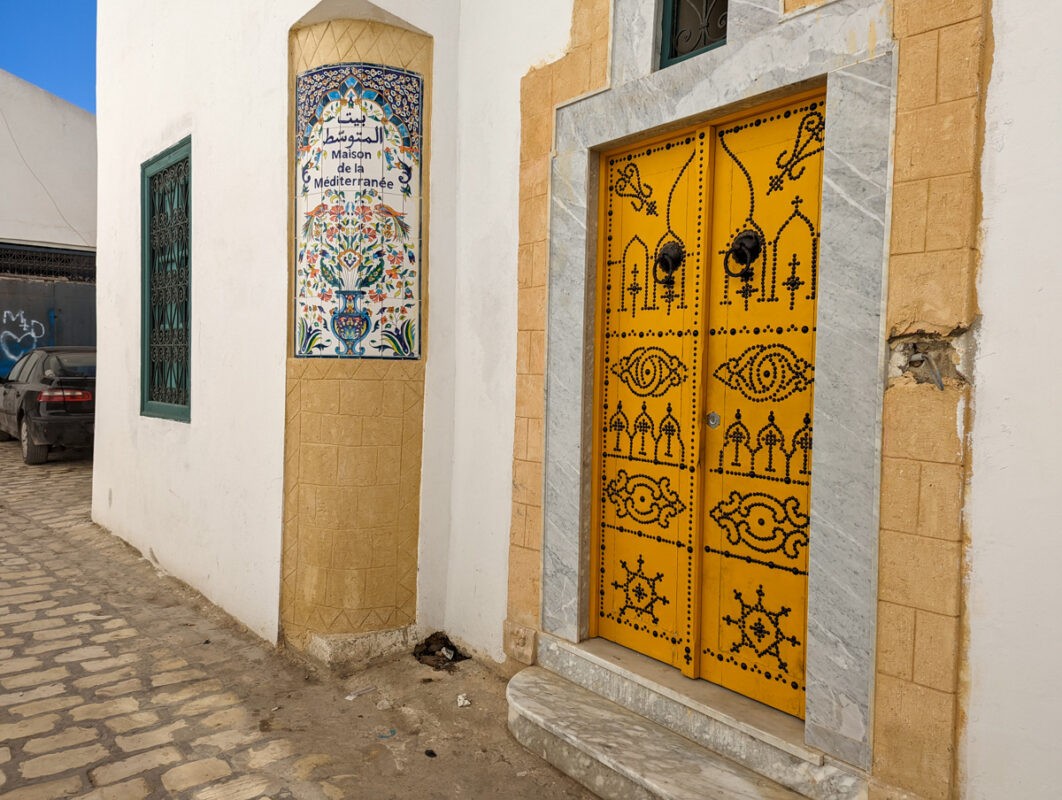
My favourite part of Tunis was, without a doubt, its historic Medina.
On this walking tour, your guide will take you through all of the passageways of the historic souks, detailing the history of the old city of Tunis and showing you the best places to purchase souvenirs!
You’ll also see places of worship like the Al-Zaytuna Mosque which is in the heart of the Medina, and look out for the unusual square minaret which looms above the old city.
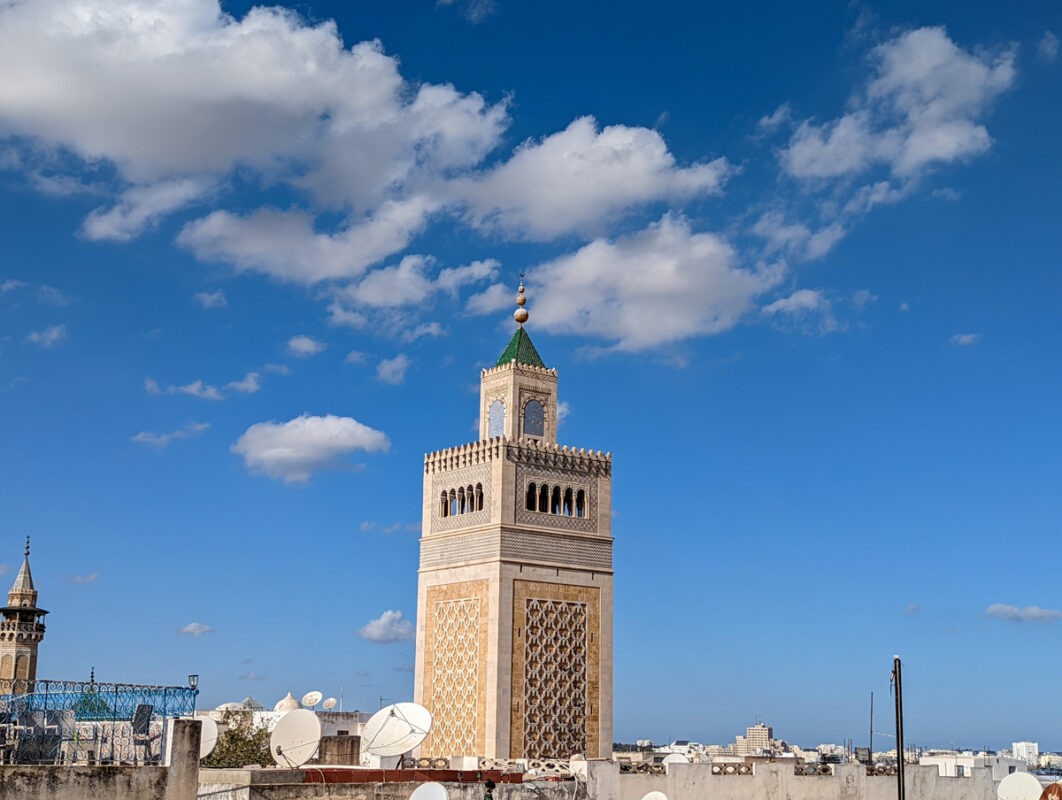
You could spend hours walking around this enchanting part of the city – and we did just that on our first day in Tunis.
Definitely pack comfy shoes, and be ready to take a million photos!
You’ll also visit the Tunis Central Market, which is an incredible snapshot of local life.
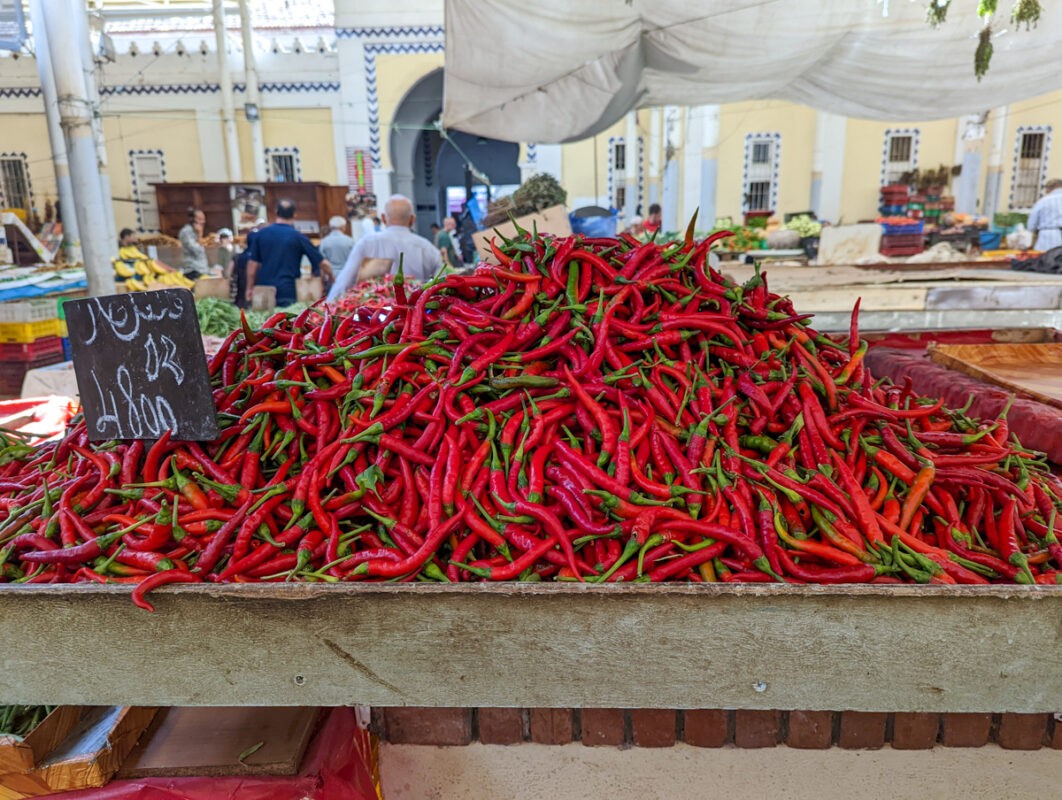
You can see whatever fruits and vegetables are in season and even purchase some Tunisian dates or other products!
Lunch at Foundouk El Attarine
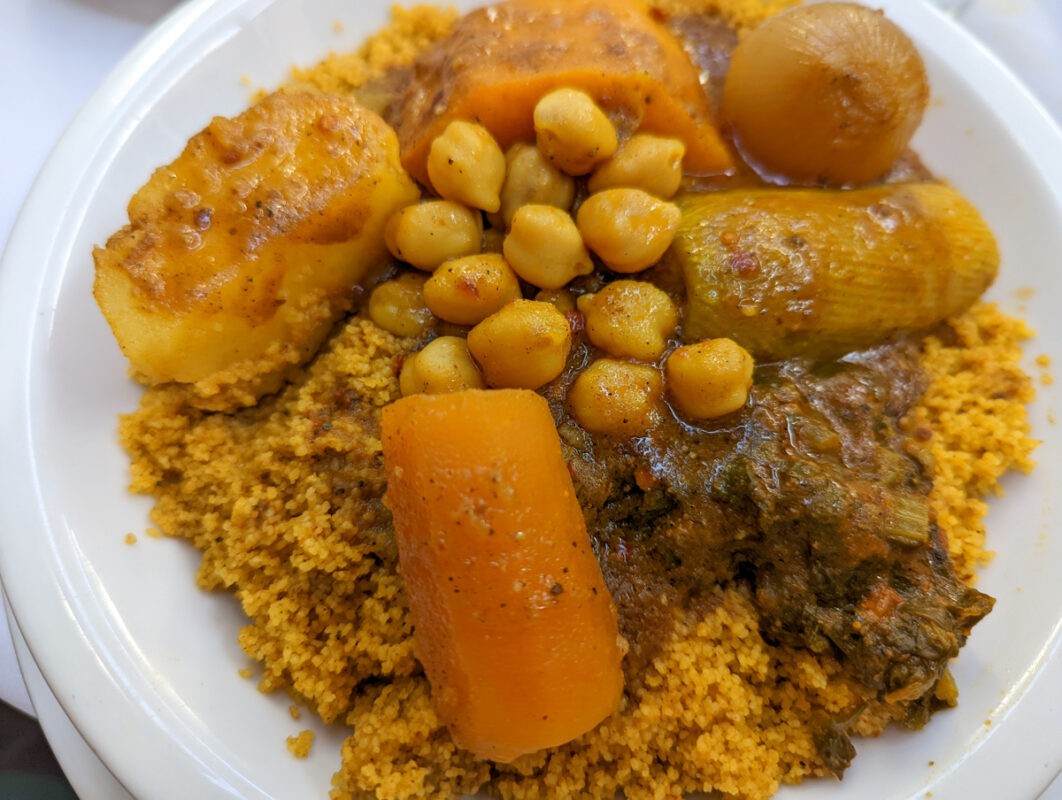
For lunch, Foundouk El Attarine offers a three-course a la carte menu, is ideally located in the Medina and provides a refreshing break from the hustle and bustle of the old city.
I had a delicious Tunisian salad, vegetarian couscous and sorbet for dessert, with a zesty glass of lemonade on the side, with a delicious mint tea after dessert.
It has a lovely courtyard atmosphere and the service is impeccable.
Tunis Museum
After lunch, I’d recommend exploring the National Bardo Museum, where you can take in the immense history of this ancient country, with mosaics dating back to the Roman age and information about how Islam first came to the country.
Cathedral of St. Vincent de Paul
You could also see the Cathedral of St. Vincent de Paul, or “St Paul’s Cathedral”.
Dating back to 1881 when Tunisia was a French colony, this Catholic cathedral was made in the Gothic revival, Moorish revival and Neo-Byzantine architectural styles.
While there was a dramatic decline in Catholic citizens of Tunisia post-independence, it remains part of the Catholic Church in Tunisia.
Dinner
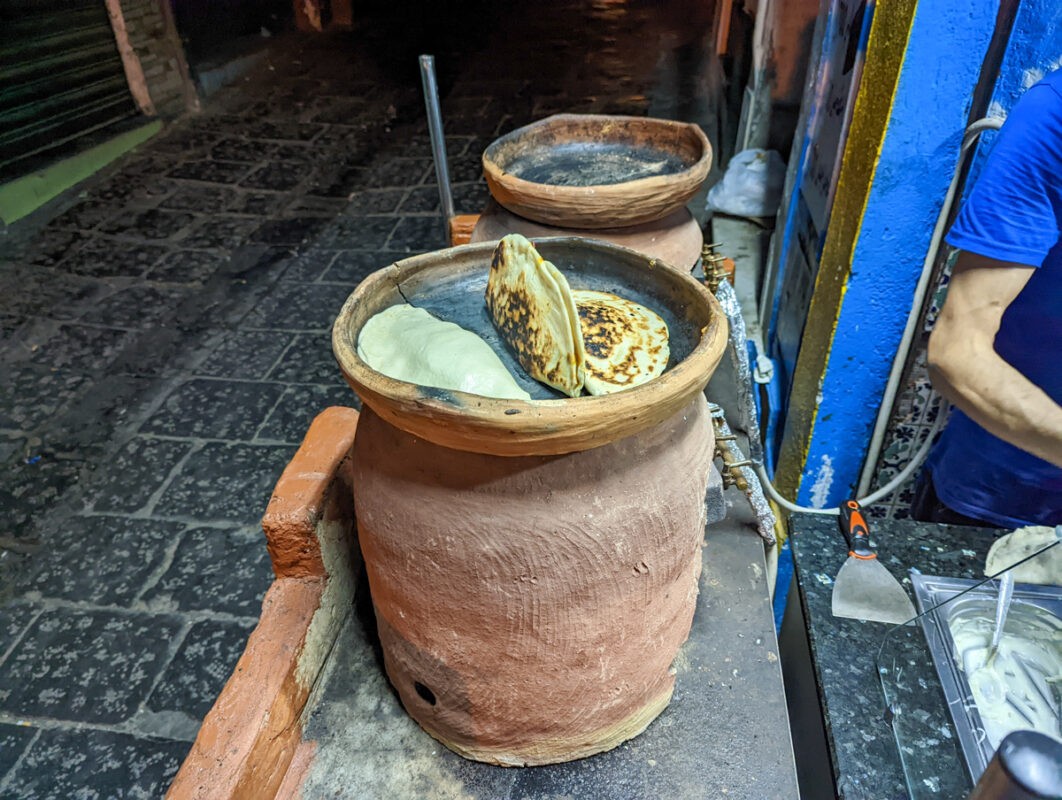
After your lunch at Foundouk El Attarine, you might not be too hungry for dinner – we just went out for a Tunisian sandwich and relaxed in the hotel!
There are plenty of takeaway shops serving these Tunisian sandwiches. Generally, they’re filled with cheese, meat, salad and various sauces (you can choose which ingredients you want when you order) and either served cold or put on a stove and heated.
The result is a delicious toasted cheese-style dish!
However, if you do fancy a sit-down meal, Essaraya is also located in the Medina and came well recommended by our hotel.
Day two in Tunis itinerary
This day focuses on the best places just outside of central Tunis – Carthage and Sidi Bou Said.
Carthage
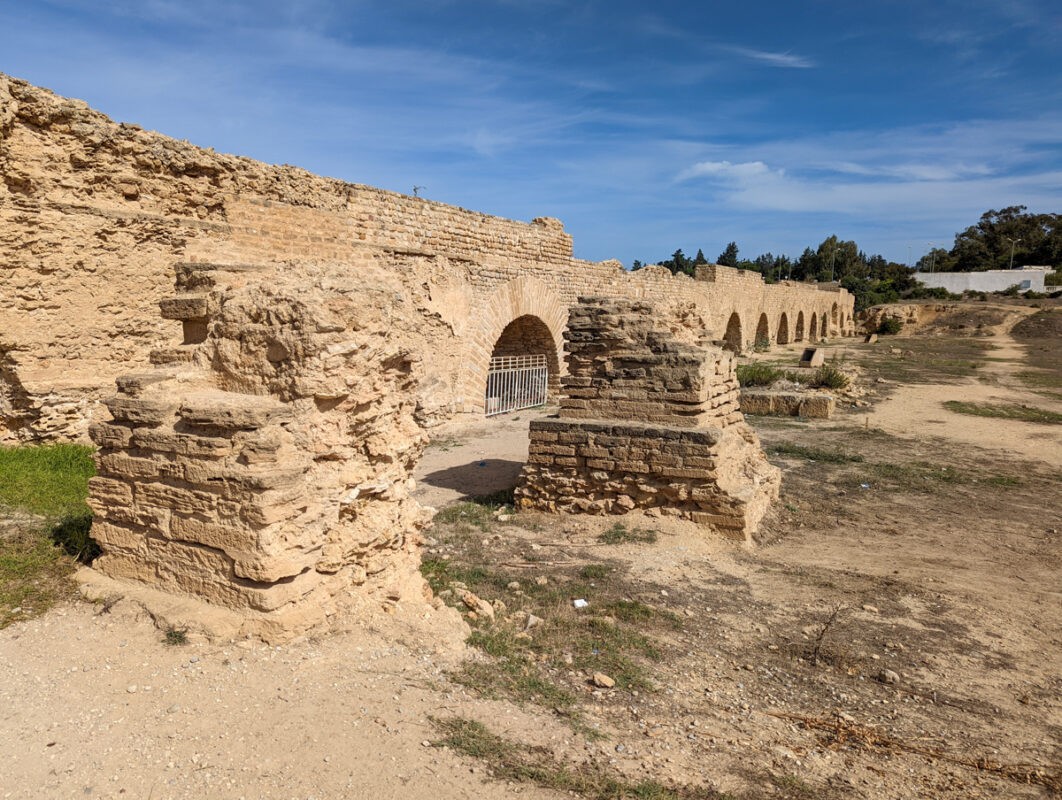
On your second day in Tunis, I’d recommend heading to Carthage, a sprawling complex of ruins to the east of the city, and somewhere that’s steeped in a fascinating amount of history.
Founded by the Phoenicians who sailed here from Lebanon, this historic city was then destroyed, occupied and rebuilt by the Romans.
It has a turbulent and complex history that you’ll sense as you walk around the enormous area.
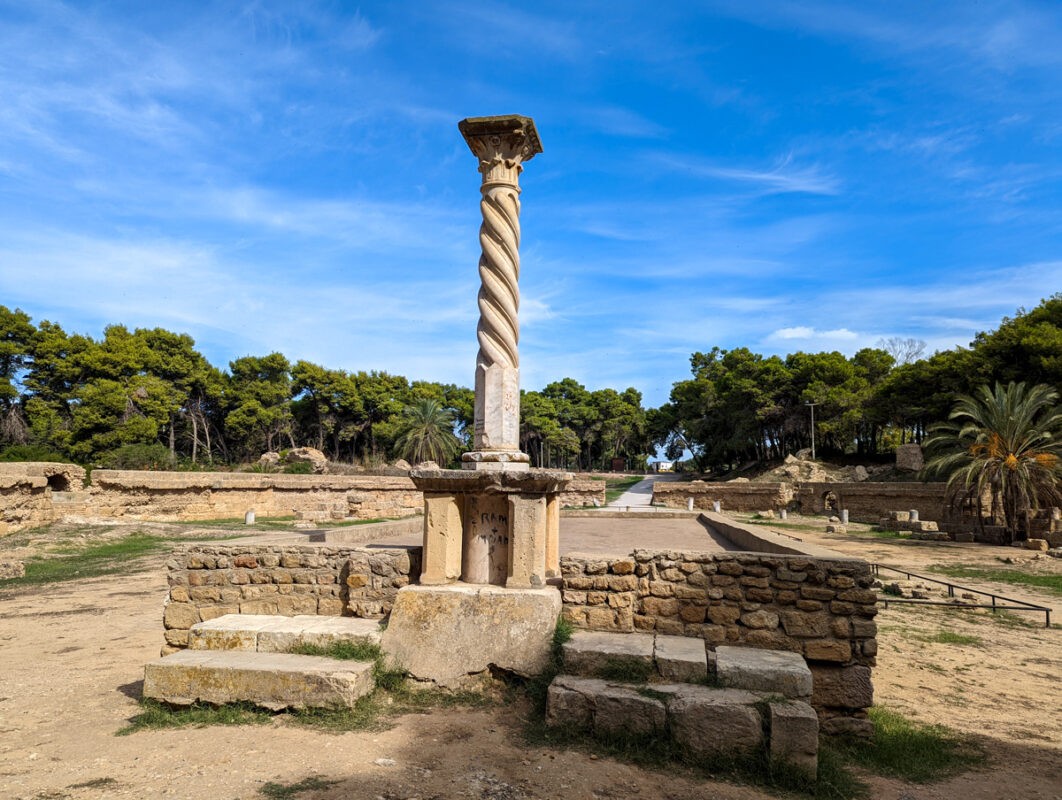
Nowadays, there are incredible ancient Roman baths, villas, and an amphitheatre.
While this amphitheatre isn’t as well restored as El Jem, it’s still well worth visiting!
The feeling of walking through a UNESCO site with millenniums of history was awe-inspiring, and the backdrop against the sea helped us envisage how this complex was created.
You’ll need a car or a driver and guide to see Carthage properly – you could do this tour that incorporates Carthage and Sidi Bou Said.
Sidi Bou Said

From Carthage, head to Sidi Bou Said, which is one of the most picturesque Mediterranean villages in Tunisia – and perhaps all of North Africa.
With narrow streets lined with bright white cottages with blue doors, this village rivals Santorini in beauty.
If you live here, it’s actually illegal to paint your house anything other than blue!

Lunch at La Villa Bleu
La Villa Bleu is a popular place to go for lunch. This restaurant has an extensive menu with views over the beautiful coastline and bright blue Mediterranean Sea.
There are some vegetarian options on the menu, but we, unfortunately, didn’t get to try them all!
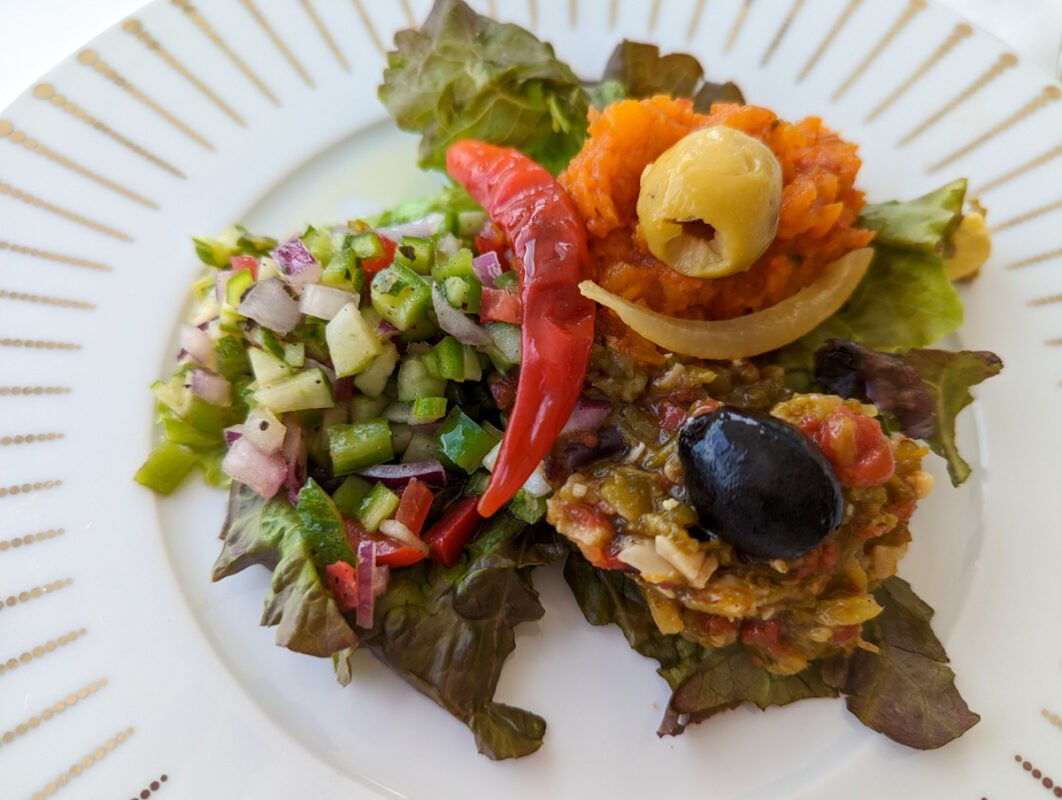
We did sample a delicious salad for starters, followed by cous cous and a sumptuous lemon tart for dessert.
Explore Sidi Bou Said some more
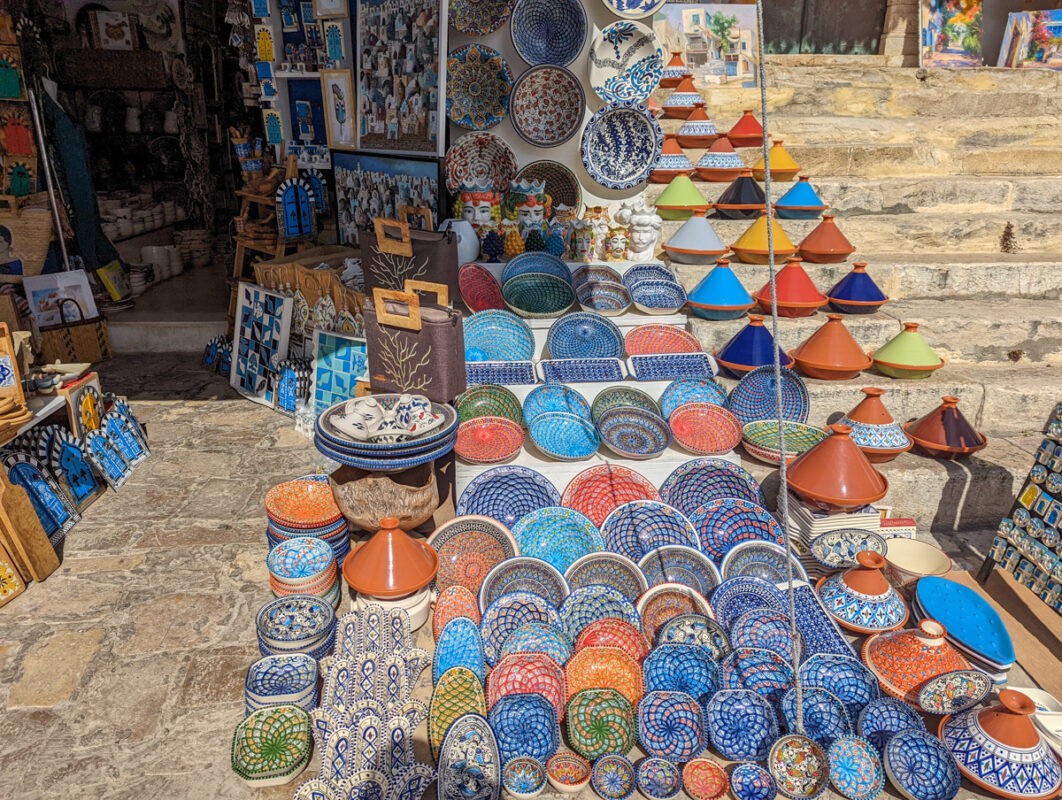
You could easily spend all day getting lost in the streets of Sidi Bou Said, taking in the view and shopping for souvenirs.
However, if you want to learn a little more about the bright blue and white town, head to Dar el Annabi, a museum located in an 18th-century building that demonstrates daily Tunisian life.
You can also walk down to the beach in about half an hour. The water stays warm for most of the year!
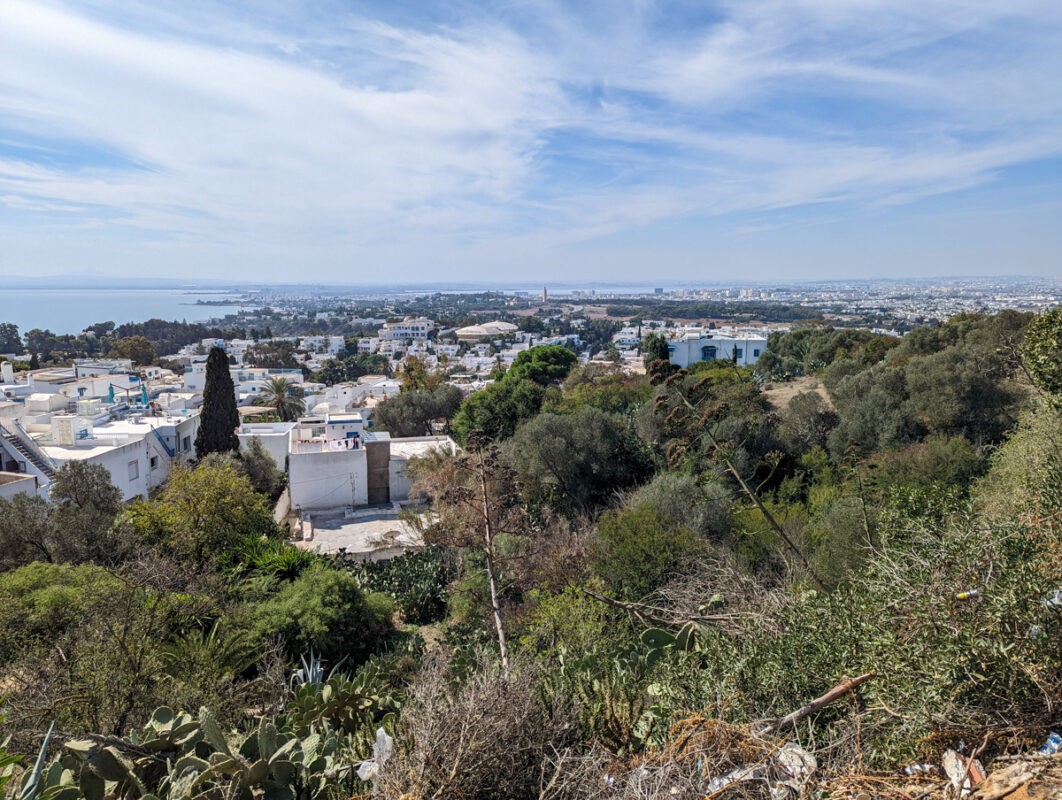
Day trips from Tunis and other places to visit in Tunisia
If you have an extra day or two when you’re in Tunis, there are some excellent day (and overnight!) trips that you can take from the city.
I’d recommend checking out the following:
El Jem
If you only visit one place in Tunisia outside of the capital, make it the UNESCO site of El Jem.
One of the largest Roman ampitheatres in the world, it reminisces the colosseum in Rome, with one main difference – there are barely any tourists.
Click here for more information about a tour to El Jem.
Sousse and Monastir
Sousse is another traditional town with a fascinating medina and archaeological museum a little further south in Tunisia.
On this day trip, you can see the highlights of the city plus visit Monastir, one of Tunisia’s previous capitals.
Click here to read more about day tripping to these two cities!
Cape Bon Peninsula
On this day trip, you’ll visit the UNESCO World Heritage Site of Kerkouane, the village of Nabeul which is famous for pottery and the fishing port of Kelibia.
2 day Sahara camel trekking
If you have time while in Tunisia, head out into the Sahara!
This desert has to be seen to be believed, and on this 2 day Sahara camel trekking tour, you’ll take it in at a slow pace, spending the day with Bedouin guides, eating Berber food and spending the night in a desert camp.
South Tunisia
Destinations in Southern Tunisia, like Djerba and the Star Wars filming locations in the Tozeur desert, are a little far to visit for a day or overnight trip.
However, you can easily get to the south of the country by taking louages and jumping from place to place. Or, you could hire a car and do a South Tunisia road trip!
As the country’s quite small, driving/ travel time is short; so if you have a spare few days you can easily extend your adventure and see more of the country!
Where to stay in Tunis

We stayed at Dar Ben Gacem, which I highly recommend.
A traditional hotel with authentic North African features, this is a 17th-century property in the medina that has been lovingly restored and refurbished.
It has all the mod cons you’ll need (air conditioning, comfy beds etc) but still retains stunning historical features. The breakfast is tasty and enormous too!
Click here to read more about it and book your stay.
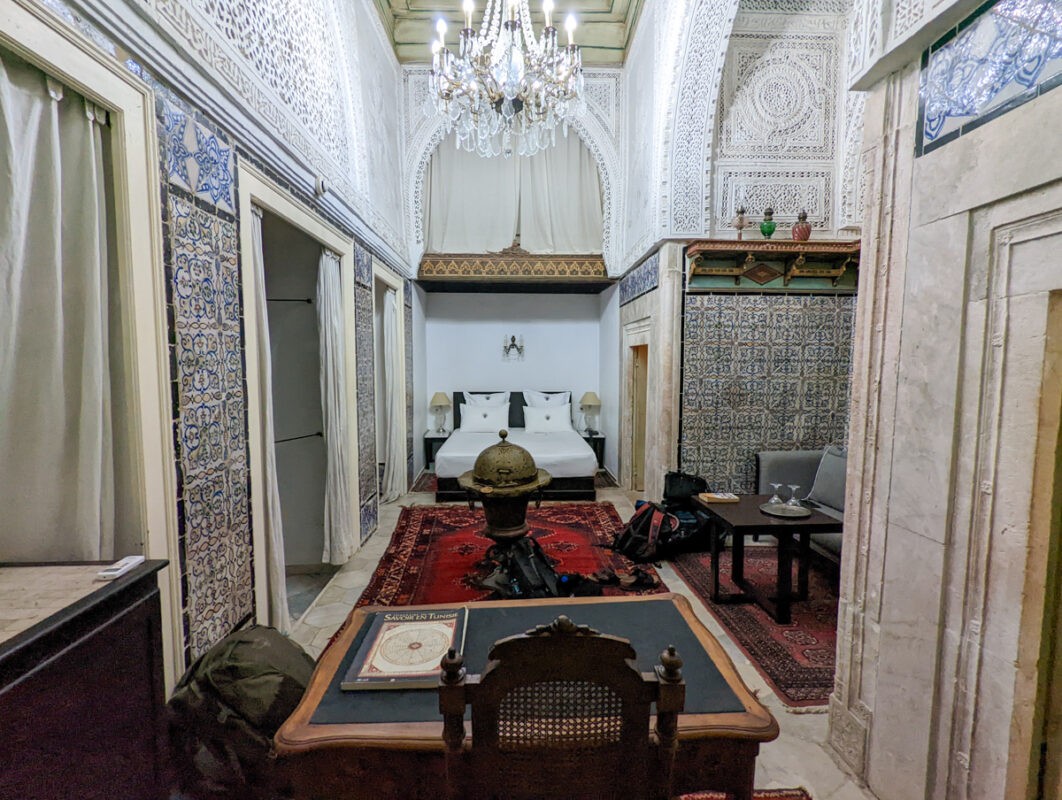
If you’re looking for somewhere to stay near the airport or Carthage, I also recommend MAIA Hotel Suites.
We stayed here on our first night in Tunisia, and it was a modern and comfortable room with a small kitchenette. Breakfast is included, and it’s an a la carte affair with plenty of courses!
Click here to read more about it and book your stay.
Getting to Tunis
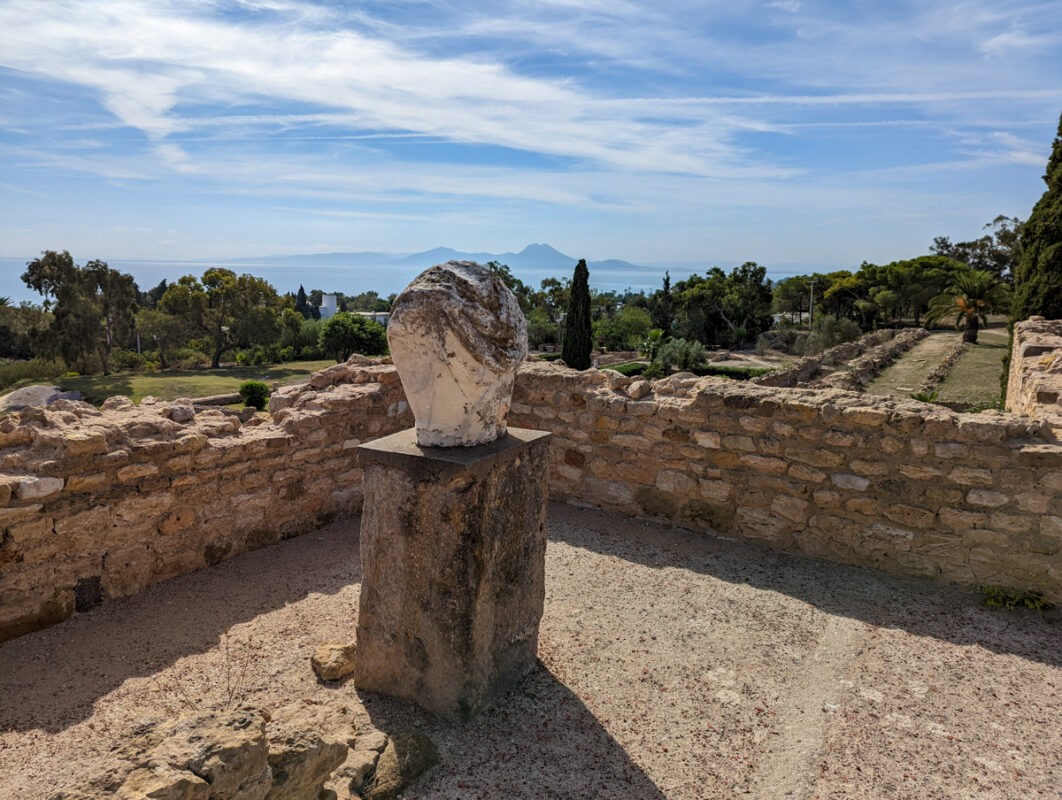
There are flights to Tunis from most European capitals, including London, Paris and Madrid.
Direct flights from London take under three hours, making Tunisia the ideal getaway for a short trip!
We got a great deal with AirEuropa; they stopped in Madrid and the timings weren’t amazing – but they didn’t only cost £130 per person for a return flight!
You can also take boats from some Mediterranean cities like Marseille (France) and Genoa (Italy).
Most nationalities (including British) don’t need a visa but double-check before travel.
At the time of writing, you either need to show your Covid19 vaccination passport or a negative PCR test to enter Tunisia (click here for the most up-to-date news about this!).
Getting from Tunis Airport to the city

Tunis-Carthage Airport sits about 20 minutes from the city centre. There are taxis waiting outside, but in our experience, they had very hyper-inflated prices.
So I’d recommend pre-booking a taxi, either with your accommodation or on Get Your Guide.
Your driver will be waiting for you in the arrivals hall, making your arrival in Tunisia hassle-free!
Getting around Tunis
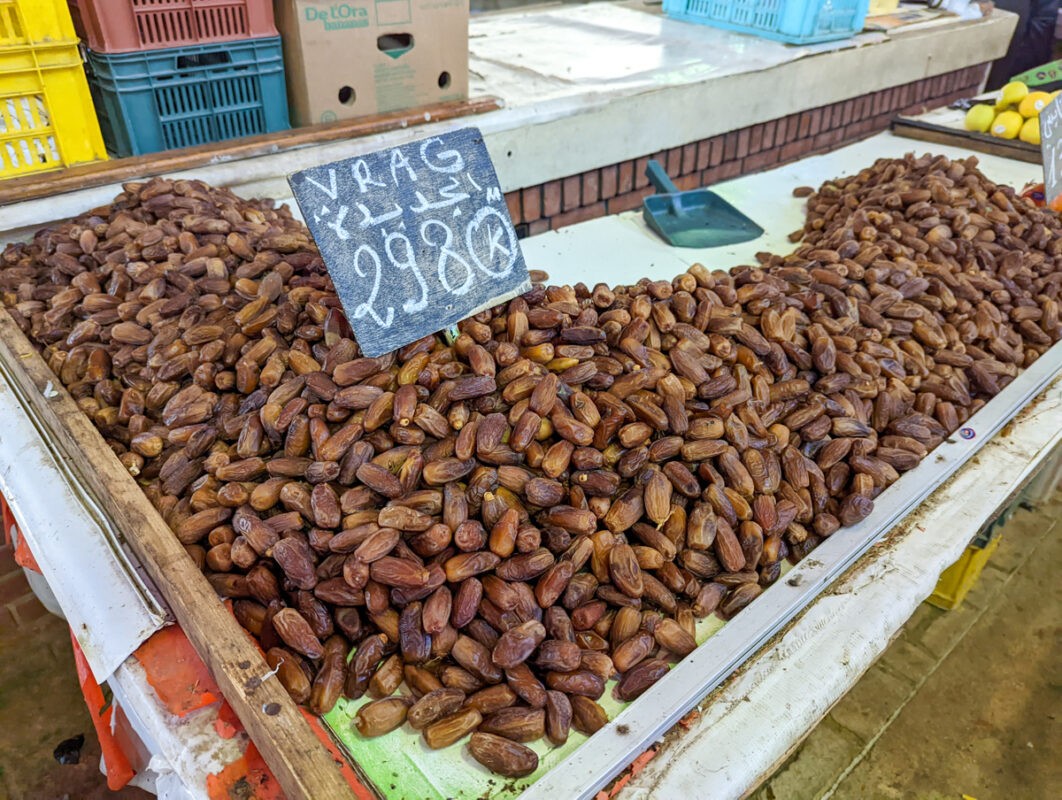
Bolt makes it easy to get around Tunis.
We couldn’t pay with a card using the app, so make sure that you have some cash on you.
If you can’t get a Bolt taxi, there are plenty of yellow taxis – but make sure you agree on a price or whether to use the meter before you get in.
Tunisia travel tips
After spending some time travelling in Tunisia, here are my best travel tips!
- Learn some French or Arabic: My AS level (for non-Brits, this is fairly advanced high school level) French did help me out a lot in Tunisia, but it was very rusty and I wish I’d known more! A lot of Tunisian people speak good English, but nearly everyone speaks fluent French (plus Arabic, of course!) so the language can help you out a lot if you’re travelling around.
- Carry cash: Many places in Tunisia are cash only, so make sure that you always have some on you (including some loose change!). You can’t take Tunisian dinars out of the country, so only withdraw what you spend. Most ATMs accept foreign cards and there are plenty of places to change USD, EUR, GBP and other currencies.
- Use public transport: Public transport in Tunisia is very efficient, and if you’re travelling from Tunis to other parts of the country, it’s pretty easy! You can read my guide to louages in Tunisia for more information (train guide coming soon too!).
- Avoid the summer season: Most locals who we met told us October, when we were visiting, was a great time of year – as the weather was warm, but it wasn’t too hot to explore! It seems that the summer season can be far too hot, and while winters are milder than in Europe, it’s not beach weather.
If you’re looking for somewhere cultural, historic and naturally beautiful to visit that’s in striking distance of Europe, Tunisia has so much on offer.
While many tourists head straight to the beaches of Sousse and Hammamet, hopefully this guide has shown you that the capital city is well worth a couple of days’ exploration as well!

